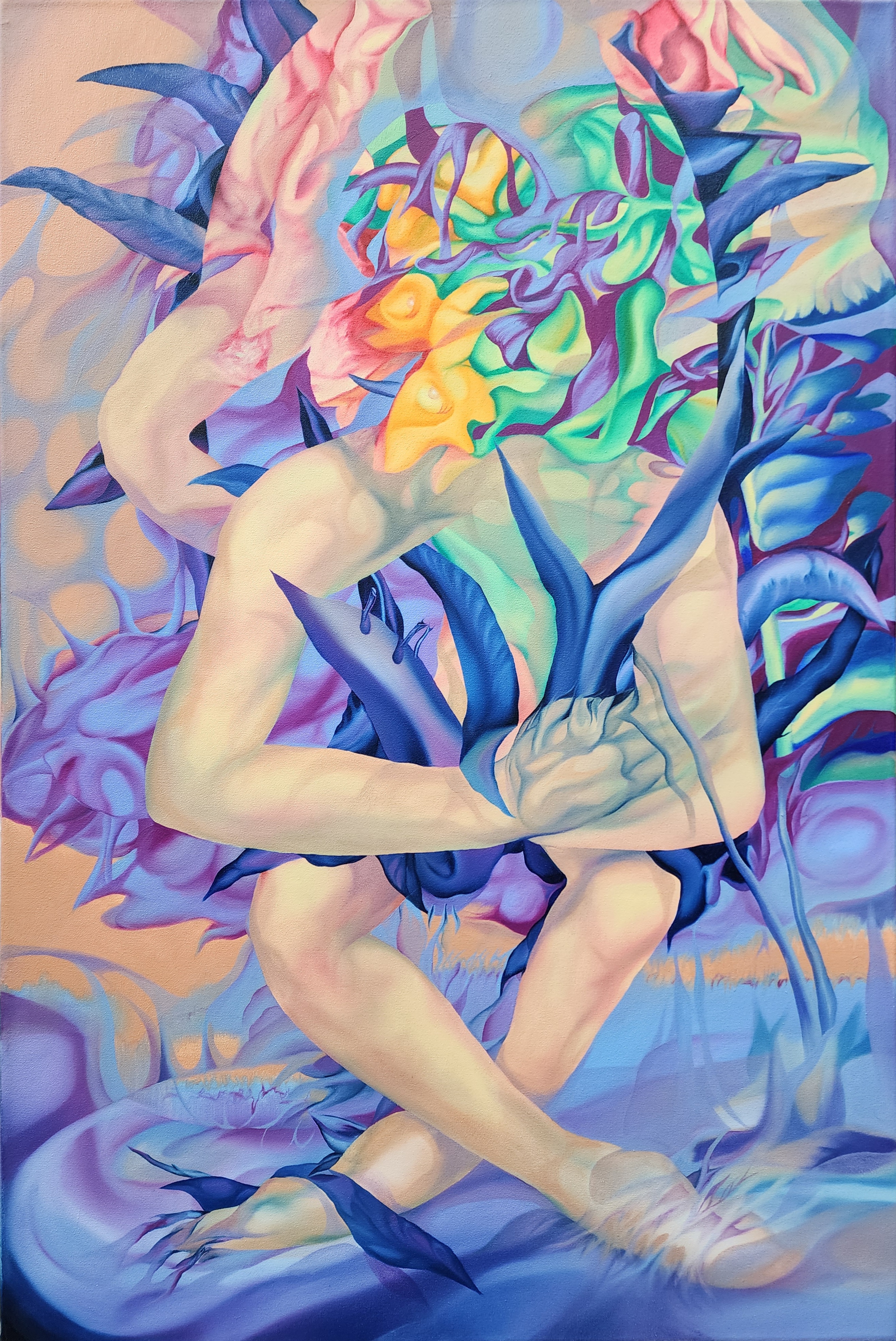The cliché ‘melting pot’ only goes some way to tracing the outline of the immeasurably complex organism that is urban life. Like all clichés, the phrase is too reductive to capture the detail of the situation. What happens in a city is somewhat traceable, in a way that the breakdown of matter in a pot is not. As individuals we have stories, ideas, legacies, and skills – things that are tangible and, crucially, recordable – that we pass on to others.
Art is a wonderful means for capturing and recording this cultural, cross-generational interplay. Although art is primarily about the transference of feeling and experience into material, there is another thread of transference which runs underground, that of artist to artist. London Calling, Unit London’s latest group show, brings together the work of three generations of artists who are closely linked to the city, as well as each other in various instances. Grayson Perry, Tracey Emin and Gavin Turk sit atop the tree, with the likes of Henry Hudson, Annie Morris and Helen Beard in the middle, below which sit a younger group of artists including Alfie Rouy, Alma Berrow and Haeji Min.
Alma Berrow’s work is imbued with a sense of play and social commentary. Cigarettes abound: they’re stubbed out in ribbons of orange peel, tins of caviar, oyster shells, and on the edges of plates with bacon and fried egg. Everything is ceramic. Condoms, drug packets and beer bottle caps appear amongst the ash, part of Berrow’s mocking critique of wellness culture and how it often stands at odds with base instincts and desires. The use of these objects – the detritus of vice – is reminiscent of Tracy Emin’s Marlboro packet sculptures or her infamous My Bed (1998). Emin’s work has often had a similarly playful, mocking tone. However, in her contemporary drawings, this is coupled with a raw emotion that comes from every jagged edge, every featureless face and contorted limb. When her drawings first started appearing, in the very late 80s and into the 90s, her figures stood politely, often inches apart on a blank page. As her practice developed through the 2000s, the figures began to take the more anguished, emotive shape seen in Get It (2013) – the work featured in London Calling.
For Annie Morris, everything starts with drawing. Although she is now perhaps best known for her ‘stack’ sculpture series, drawing is the first step in the process, it is where the colour, the form and the ultimate idea stem from. The first stack sculptures were the result of a drawing: the circular, rock-like shape appeared on the page and Morris then began to create sculptures that mirrored it. Colour is hugely important to her practice; she views the vibrancy of pigment and the endless possibilities that different hues represent as emblematic of a restorative kind of hope. She views the stacks, which are the product of a tragic time in her life, as towers of positivity – the vibrancy and solidity of the rocks are fundamental in turning the artwork into a beacon of hope. Helen Beard’s work has a similar focus on vibrancy and positivity. Like Morris, she blocks out shapes in solid hyper-contemporary colours so that, if you let your eyes drift out of focus, the painting begins to fade into abstraction. The works are both shocking and unapologetic, as evidenced by the ever-present social media debate that follows them. Ultimately, they’re works that champion positivity and freedom of sexual expression in both life and art.
This idea of hope and positivity also makes its way into Henry Hudson’s latest works. Inspired by lockdown walks along the Thames, these new plaster-on-aluminium works look to capture the light on the river at different times of the day. Throughout London’s history – and particularly at times of plague – the Thames has been viewed as the lifeblood of the city, an unerring symbol of vitality, resilience and longevity. During the pandemic, Hudson witnessed a return to this way of thinking first-hand, walking the river with friends. The resulting works capture the ephemeral beauty of light on water and allude to the beneficial aspect of natural landscapes within the built environment. Haeji Min’s practice is also occupied with the symbolic qualities of water. She draws connections between the fluidity of time and the River Lethe in Greek Mythology, which was said to wash away memories as mortals transition from life to death. Her colourful, loosely figurative works are elusive and difficult to pin down and define, like the water that inspires them.

Grayson Perry’s often humorous tapestries look to identify and label certain subcategories of society, placing them together in a (sometimes) fictionalised topography. In Perry’s Large Expensive Abstract Painting (the work featured in London Calling) the city’s demographics are mapped out: ‘yoga mats’ sit next to ‘modern slavery’ in the west, ‘asset class’, ‘bonus’ and ‘high net worth individuals’ are in amongst ‘meritocracy’ and ‘ethically sourced’ in the centre, while ‘gentrification’ shares the space with ‘knowledge economy’ and ‘capital gains’ in the east. Perry understands that the city’s flux and evolution are brought about by the interactions between different groups of people over a range of generations. They are involved in a constant dialogue and mutual exchange: the handing down and up of skills, the telling of stories, and the sharing of ideas. The city, rather than a ‘melting pot’, should be a tapestry, each thread connecting one life to another in an observable, traceable way. Chaos up close, harmonious when viewed from afar. London Calling is an exhibition that captures this feeling of collegiate influence. It is a small section on the tapestry of the city, a complicated bundle of thread that is near impossible to decipher, but intriguing nonetheless.